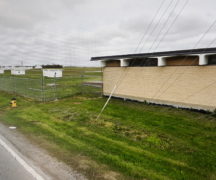By JAN LARSON McLAUGHLIN
BG Independent News
Bowling Green’s water rates are not bringing in enough to keep the water expenses afloat. A rate study by Courtney & Associates has found that revenues need to be hiked by 32 percent by 2022.
If approved, those rate increases will be spread out over five years, with a 6 percent bump each year.
While the 32 percent hike may sound big, even with the proposed rate increases, Bowling Green’s water rates will be much lower than those in some other communities in the region.
The average homeowner currently pays a monthly water bill of $11.46. With the five-year increase, that bill will be $16 a month. That compares to monthly bills more than $50 in Perrysburg, Napoleon and Fremont.
Though the total water revenue will need to be boosted by 32 percent over five years, the levels will be different for each category. Residential will be increased 44 percent over that period; commercial and industrial will go up 29 percent; wholesale will increase 28 percent; and hydrant costs will go up 143 percent.
John Courtney, who presented the water rate study, said Bowling Green has been able to keep its water rates low because city officials decided years ago to use money from income tax revenues to help fund the city water system.
“Your rates are still the lowest on the list,” Courtney told the Board of Public Utilities last week.
“That’s awesome,” replied Mike Frost, president of the Board of Public Utilities.
But the income tax fund made up 40 percent of the water rate expenses 10 years ago. That shrunk to 33 percent five years ago, and is now about 23 percent.
“Your costs are going up,” Courtney said.
The city has seen some growth in wholesale water sales to communities outside Bowling Green, but very little growth in water demands in the city.
“Your sales have been fairly stable over the last several years,” Courtney said.
The city has not increased its water rates since 2016. Meanwhile operating expenses continue to increase.
At current rates, the different categories of water customers generate the following annual revenues:
- Residential, $1,025,800
- Commercial/industrial, $2,307,100
- Wholesale, $2,178,900
- Hydrant, $35,900
The proposed rate changes called for:
- Phase-in increases over the next five years.
- Increase rates to result in an increase in revenue of approximately 6 percent each year.
- Increase the residential customer charge to recover projected billing and collection costs.
- Transition outside surcharge to 50 percent by test year 2022.
“In your case, there’s justification for the outside surcharge because of the income tax,” Courtney said.
Following is a breakdown of Bowling Green’s rates compared to other cities in the region.
The average monthly water bill for residences in Bowling Green is $11.46. After five years of incremental increases, the average monthly bill will be $16. That compares to current monthly rates of $51.63 in Perrysburg, $50.55 in Napoleon, $50.50 in Fremont, and $19.16 in Findlay.
The same is true of commercial water bills. Right now, the average monthly commercial water bill is $58.55 in Bowling Green. Five years of increases will boost that to $80.73 per month. That compares to $202.27 in Napoleon, $172.11 in Perrysburg, $170.34 in Fremont, and $84.82 in Findlay.
Likewise with the industrial water bills, which average $567.33 in Bowling Green now, and will rise to $774.74 at the end of five years. The new rates will still be lower than the average $1,936 in Napoleon, $1,721.10 in Perrysburg, $1,320.05 in Fremont, and $826.19 in Findlay.
The board of public utilities will consider a decision on the rate proposal at the next meeting on April 23. If approved, the first rate adjustment will occur in June, then follow in April the next four years.





